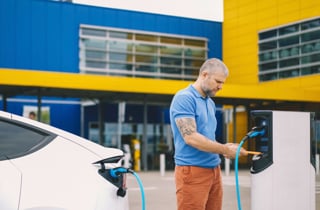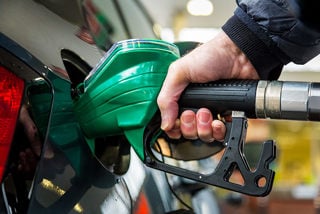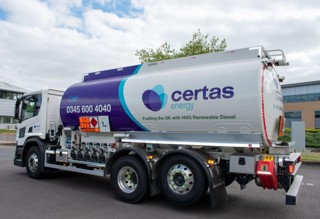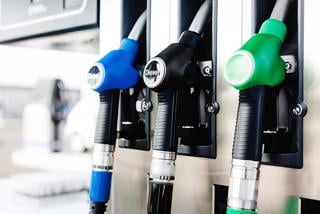Removing fully-expensed fuel from drivers is a financial no-brainer for employers – it saves them hundreds of pounds per employee per year in fuel bills and taxes.
But the situation is not always so clear-cut for the staff losing the benefit. For them, taking away ‘free fuel’ results in both winners and losers.
The winners will have been paying more in tax than the value of the fuel they use for their private mileage, so will benefit financially.
The losers, however, would be left out of pocket – and as the calculations are usually based on a vehicle’s official combined fuel economy, the number of people who will be worse off increases if the real world figures are used.
For example (see table), using official test results, a 20% income tax payer who drives a BMW 320d ED Plus would have to travel 13,002 miles a year before they are better off through receiving fully-expensed fuel.
If the real world figures – achieved by a Fleet News long-term test car – are used, this falls to 9,030. This will increase to 9,546 when changes to both the BIK bands and the fuel benefit charge multiplier come into force for the 2016/2017 financial year, which begins in April.
Some fleet suppliers, however, do tailor their calculations to real world conditions.
“We have developed our own cost comparison tool which, on a driver-by-driver basis, evaluates the situation and includes a feature where you adjust the official fuel consumption figures by whatever percentage you wish, to reflect the real world,” says Ian Hill, managing director of Activa Contracts. “Our default is about 15% lower because, on most cars, this seems to be about right.”
Paul Hollick, commercial director of The Miles Consultancy, estimates that the average saving for an employer taking staff out of fully-expensed fuel, even taking any compensation into account, works out at just over £800 per employee, per year.
“In this day and age, it’s not an efficient taxation scheme for an employer or employee to have, so the employer may as well work out a mechanism that means the employee moves away from it,” he says.
The first step towards removing the benefit is to collect and analyse data.
This can be done electronically through mileage capture systems, apps or spreadsheets, or by recording business and private mileage on paper.
“One thing that people find attractive about fully-expensed fuel is that they see that it is very easy to administer,” says Hill.
"Drivers don’t have to keep mileage records, which they see as a bit of a bind so you have to overcome that, but the savings are so significant in most cases that it’s worthwhile introducing a system."
Once an employer has analysed the data, there are a number of options available to them which could allow it to remove the benefit.
This analysis usually shows that the majority of employees will be better off without the fully-expensed fuel, so it should be quite straightforward to remove their benefit, says Nick Davies, director – employer consulting at BHP.
“You can demonstrate to drivers quite clearly that they are paying more in tax than they would in fuel costs,” he says.
“Every employee is most interested in the bottom line, so the art of communication is not to overcomplicate it, but keep it simple and demonstrate the degree to which they would be better off.
"Producing dummy payslips is great for that, but similarly it could be as simple as doing the calculations and saying ‘by having private fuel, you are worse off by £450’ or whatever it might be.”
The analysis will also identify drivers who will be worse off through losing their free fuel, and therefore need to be compensated for the withdrawal of the benefit.
“The savings that the company makes in total far outweigh any compensations they have to pay, so they don’t have to be mean and stingy,” says Hill.
One way to compensate drivers for the loss of their fuel benefit is through a one-off payment.
“This can be difficult to communicate because you would be compensating a driver for essentially a fixed period of time,” says Davies.
“An employer can calculate the annual benefit a driver receives, so what they can do is say ‘OK, having private fuel is saving you £300 now, but in the next tax year it is not saving you anything because of the increase in fuel benefit. Therefore, to compensate you up to the period when it ceases to be a benefit we will pay you this sum of money.’
“How that works in an employee’s mind is less clear.”
Davies says many employees see fully-expensed fuel as a “never-ending” benefit as there is no set date when it finishes, while a single compensation payment brings a definite finish to it.
One way around this mental barrier is to replace the fully-expensed fuel with a monthly fuel allowance.
“You can say ‘ok, you are £200 better off this year by virtue of having private fuel.
"What if we withdraw private fuel but we give you a fuel allowance, so we gross up the £200 for tax and national insurance and pay that as a multi-allowance through the payroll?’," Davies says.
“It doesn’t have to be pensionable pay – you can make clear it’s not, it’s purely a fuel allowance – so you are putting them in the same position that they were in when they had the fuel benefit.
"The selling point there is that if you remain with private fuel it will deteriorate year-on-year, so we are protecting you against these ongoing tax increases by doing this.”
Compensating an employee for the loss of the benefit can also be done by adjusting their salary, says Hollick.
“An employee could be bought out of it by giving them a salary engrossment, or you could give them a one-off bonus every year,” he says.
There are also more gradual ways of removing the benefit which do not include paying compensation. These include approaches such as continuing to provide fully-expensed fuel to existing employees, but not offering it to any new members of staff.
“However, depending on staff turnover, you could take 20 years to fully remove the benefit,” says Davies.
“If I was doing that I would combine this with still offering the existing workforce the option to withdraw from private fuel as the likelihood is that the majority is not benefiting from private fuel.”
Another alternative is to leave free fuel in place, but review it when an employee’s car is about to be replaced, says Hill.
“Some people would say to an employee 'the next time your car lease comes up in two years’ time, we’ll review your fully-expensed fuel situation’.
“That will give the driver the opportunity to select a more fuel efficient car if they so wish which you benefit them.”
But there remains the issue of those drivers who refuse to give up their benefit.
“There’s a small proportion, maybe 2-3%, where it probably works for them, so therefore keep them in the scheme – it’s not the end of the world,” says Hollick.
“It’s still annoying because the employer is still paying for the fuel and the employee is still paying the tax, but the overall savings are far greater than any benefit you will continue to pay.”


















Login to comment
Comments
No comments have been made yet.